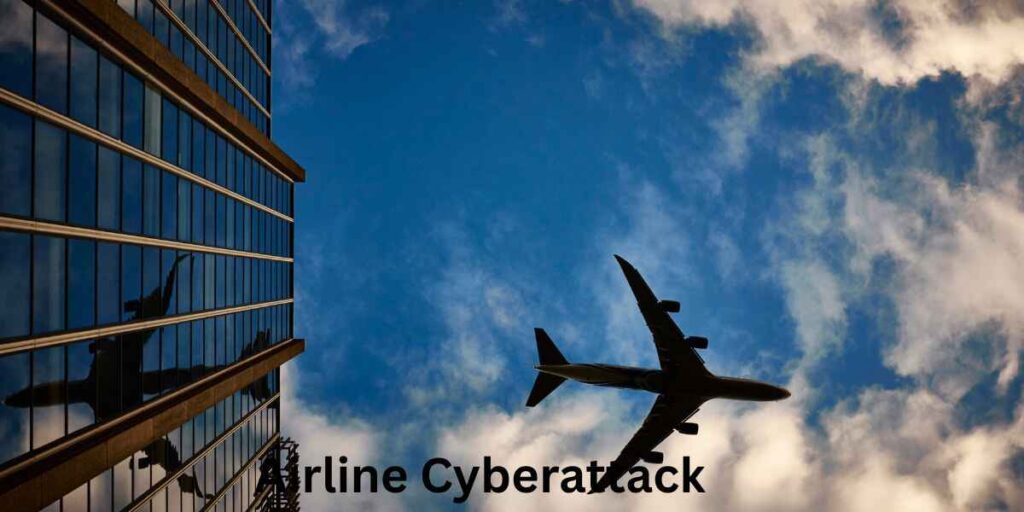Airline Cyberattack: Recognizing the Risk and Preventing It
When you least expect it, an airline cyberattack may occur during check-in, while purchasing a ticket, or even on your trip home. Airlines, travelers, and the travel sector as a whole are all impacted by these cyber threats. We’ll describe these attacks in plain English in this post, along with their significance and self-defense measures. In addition, we’ll discuss carriers like Porter carriers, highlight actual events like the WestJet cybersecurity problem, and offer travel advice pertinent to Travel Advisor Canada. Let’s dive in!
1. First, what is a cyberattack on an airline?
A digital attack that targets airline systems, like booking platforms, check-in kiosks, or luggage handling systems, with the intent to interfere with services, steal information, or even take over operations, is known as an airline cyber attack.
Imagine getting to the airport and discovering that your e-ticket has disappeared due to a system hack.
Or worse, your suitcase disappears after hackers compromise baggage routing.
To put it briefly, these attacks have the potential to erode confidence, cause flight delays, or reveal personal information.
2. The Significance of Airline Cyberattacks in the Present
2.1 Airlines’ Quick Digitalization
Digital technologies are increasingly widely used by airlines, from Wi-Fi onboard to online check-in and smartphone apps. Because of this intricacy, hackers might potentially enter through any digital point.
2.2 Hackers’ High-Value Targets
Credit card information, travel schedules, and passenger data are all treasure troves. Fraud and legal disputes may result from a single exposure of this data.
2.3 Actual Incident: Cybersecurity Incident at WestJet
Check-ins were interrupted by a WestJet cybersecurity incident in 2025, necessitating a manual workaround. The airline immediately improved security procedures, conducted an investigation, and shut down systems. Everyone learned from the story that even big airlines can fail.
3. A Personal Story
Recall the March 2025 website hack protest against deportation flights at GlobalX Airlines. Using messages related to public concern about cargo deportations, the attackers vandalized the website. Although the episode was not specifically about passenger data, it did highlight how airlines might become embroiled in political controversy, which further erodes passenger confidence.
4. The Detailed Threat Analysis
Tracing the lifespan of an airline cyberattack is necessary to comprehend it:
Hackers use reconnaissance to look for weaknesses or open ports in airline systems.
Footprinting: Compiling employee data and educating airlines about insider threats.
Methods of entry include USB viruses or phishing emails sent to employees.
Escalation: After breaking in, attackers are granted administrator access.
Attack: They can distribute ransomware, block systems, and steal data.
5. Principal Categories of Cyberattacks on Airlines
Type of Attack, Description, Impact Phishing ExampleFalse emails fool employees into downloading malicious software. Getting access to safe systemsRansomware could cause airline delays and booking system failures by encrypting files until the ransom is paid.
Attacks bDDoS traffic overload servers, taking down platforms for check-in
Insider Dangers unhappy worker purposefully causes harm. System failures or data breaches
6. Secondary Focus: Travel Advisory Canada & Porter Airlines
Cyber threats affect even minor airlines, such as Porter Airlines in Canada. Even while Porter makes significant investments in two-factor authentication and employee training, changing threats necessitate ongoing attention to detail. You should remain vigilant when there is Canadian travel advice, particularly when travel delays may be caused by airline IT problems.
7. How Airlines Respond to Attacks:
Airlines have incident response plans that outline how to handle security breaches.
Isolation: To stop the spread, disconnect the impacted systems.
Find out how the attack happened with forensics.
Restore and Recover: Rebuild impacted systems and switch to backups.
Communicate: Inform the public, authorities, and passengers.
Evaluate and Enhance: Update guidelines, provide staff training, and strengthen defenses.
8. Actions Passengers Can Take
You have a role, even if you’re only flying:
Strong Passwords: Give airline accounts distinct passwords.
A layer of protection is added by two-factor authentication (2FA).
Identify Phishing: Keep an eye out for dubious emails or texts.
Update Apps: Important security patches are included in regular updates.
Track Transactions: Look for unforeseen expenditures on your credit card.
9. Things Airlines Need to Focus on
Making sure employees are aware of cyber threats through employee training.
Frequent security audits include code reviews and penetration tests.
Both in-transit and at-rest data encryption.
Zero-Trust Security: Assume that by default, no device is secure.
Monitor for Insider Threats: Keep tabs on odd employee behavior.
Exercises that simulate incidents are drills for practical application.
Regulatory Alignment: Comply with guidelines (such as ICAO Annex 17 and NCASP).
10. Airline Cybersecurity’s Future
As digital travel develops further, airlines need to:
Use cybersecurity with AI to find anomalies.
Put in place blockchain-based solutions for passenger identification.
Construct flexible supply chains to endure interruptions.
Form alliances across industries to counter common dangers.
11. Connecting Everything
Cyberattacks on airlines affect more than just technology; they affect travel. They have an impact on your data, flying, and safety. However, by being aware of the hazards, you and the airlines can cooperate to ensure a safe flight.
Recall:
Be proactive and watchful.
Make use of basic techniques like 2FA and strong passwords.
Keep yourself informed, particularly if you’re flying during a Canadian travel advisory.
Have faith in airlines such as Porter Airlines, WestJet, and others that make investments in cybersecurity.
12. Final Thought: Make a Confident Reservation
When you know someone is looking out for you, flying is more enjoyable. It’s a victory when airlines openly bolster their systems following incidents like the WestJet cyberattack. Carriers that train employees, invest in cybersecurity, and seem open about their preparedness are the ones you should book with.
Sensible travelers and conscientious airlines are the first steps toward safe travel. Take off with assurance. Just like a DDoS attack explained here, an airline cyberattack can overwhelm systems, causing major flight delays and putting passenger safety at risk.

